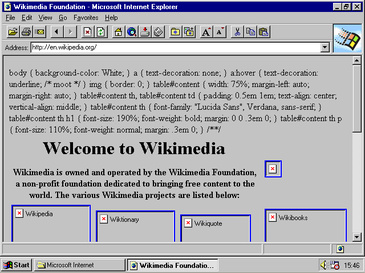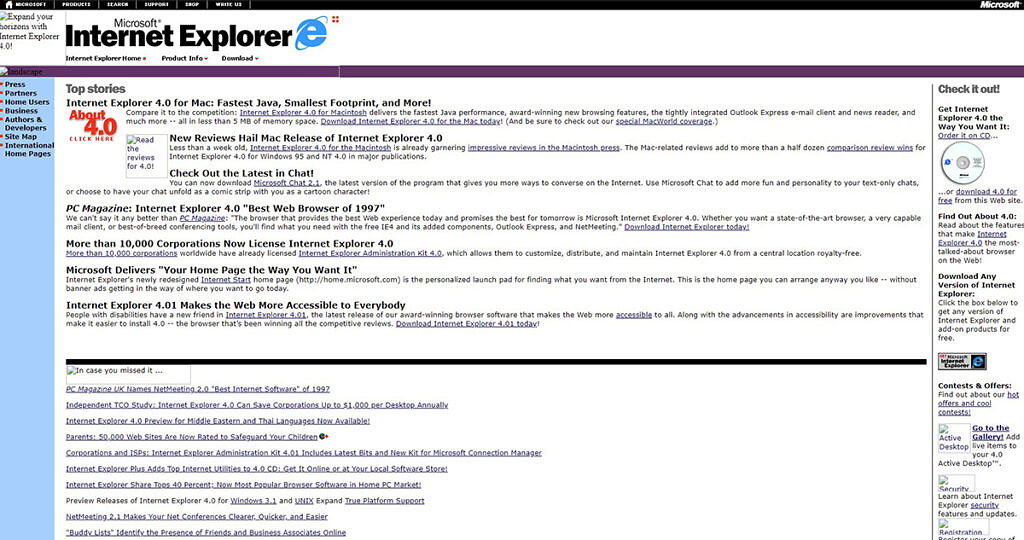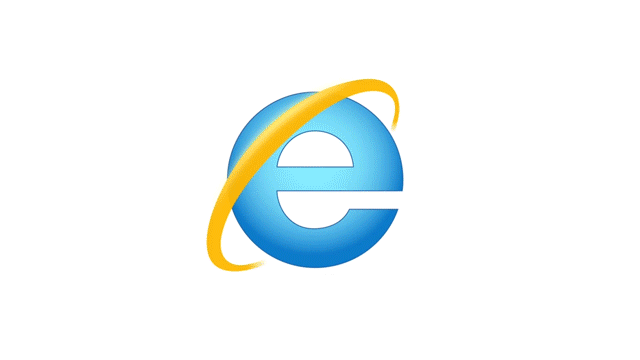After almost 27 years, Microsoft is killing off Internet Explorer, its in-house web browser, which is now being used in-jokes and parodies on Twitter accounts that complain about how slow it’s. It’s certainly been a bumpy and long path for the older browser, which is an emblem of the company Microsoft was once.
Instead of being focused on web standardization, Microsoft developed proprietary software such as VBScript and JScript which was a replacement for JavaScript. The goal was not to create a more open internet for all. It was to rule the internet in the same as the Redmond firm had controlled desktop software.
In the beginning, it did work. Microsoft was infamously sued for the bundle of Internet Explorer with Windows, in a case of anti-trust practices. This enabled Microsoft to hold the majority use of browsers for the web despite Netscape being superior in numerous ways.
As of 2003 Internet Explorer had 95 percent of the users, however Mozilla Firefox was released in 2004 before Google Chrome was released in 2008.
Indeed, bundling software and Operating systems are an excellent method to convince people to install the software. One could claim that you’d need to convince most customers to change to something that would require an external purchase. This is exactly what happened. Internet Explorer eventually became known as the Google Chrome installer, because when you create a new computer the first step was to open the program IE and install Chrome and not use the blue E ever again.
Table of Contents
Internet Explorer 1

Internet Explorer was the creation by Thomas Reardon, and it was released as part of Microsoft Plus! to Windows 95, a $49.99 software bundle that included an “Internet Jumpstart Kit”, an online game dubbed Space Cadet Pinball, and other utilities such as DriveSpace 3 and Compression Agent. The team was comprised of six individuals, which comes as an unsurprising fact given the condition of the web in the year 1995 when Microsoft Internet Explorer launched.
Then, shortly after, Internet Explorer 1.5 was released, which included table support. This was also the time when Microsoft began to bundle the program together with Windows NT, which meant that it didn’t need to pay licensing costs to a company Microsoft has been accused of taking the source code of.
Internet Explorer 2

The pace of change was swift things moved pretty quickly, and Internet Explorer 2 was released on the 22nd of November 1995. Actually it was released as an IE 2 beta in October and that was two months after the initial version launched. There are some interesting features in this version. Although the first version was only available for Windows 95 and later Windows NT, Internet Explorer 2 included support for earlier Windows 3.1, and Macintosh System 7.0.1.
There were a few important aspects added that we’re now familiar with on the web today like the support of JavaScript, HTTP cookies, SSL and many more. It was updated to support HTML3 and also the ability to transfer bookmarks to Netscape.
Internet Explorer 3
Then, fast forward to the 13th of August in 1996, which is the day that Internet Explorer 3 was released. This was the very first version I personally used, but more specifically, it came with Internet Explorer 3.02. Although Internet Explorer 2 was the first version that was supported by Macs, it was the first version to be included with Macs, and it was included along with Mac OS 8.
At this time, IE was still trying to catch up with Netscape and this is when the competition between them began to get heated. One thing included in IE3 came with support for CSS, also known as Cascading Stylesheets. There was also the ability to support ActiveX as well as frames. These are things that isn’t talked about any more. Frames were a method to effectively render two websites together, meaning you could use one frame that served as a navigation bar and another to display content. So when you clicked a hyperlink in the navigation bar only the content would need to be loaded.
It was also the time that Microsoft also introduced JScript which was its proper version of JavaScript that was nearly the same.
It also had a lot of bundle software. IE3 was bundled with Internet Mail and News, Windows Address Book, Microsoft Comic Chat, RealPlayer, NetMeeting and Windows Media Player. Naturally, the majority of these have been discontinued.
Internet Explorer 4

In September 1997, Internet Explorer was released for Windows in September 1997, Jan. 1998 on Mac and the month of March to Unix, Internet Explorer is the moment when the browser wars really got heated. In the present, it is impossible the operating system would launch without a browser. In the end, all the software we use is download. We’d be in a bind without it. In 1998, nobody was experiencing the speeds of gigabit which we enjoy today. In 1998, we were using dial-up. I can still remember waiting for videos to load. Do not bother streaming video or download software. That’s a long way from the present.
I’m trying to draw that image because it’s completely different from the one I paint. You could download some software from certain websites but it’s a long time. In the end, we did have Napster in the past. However, the fact is that getting software was a long and tedious effort. Bundling a browser for web with Windows 98 meant people were likely to utilize it as an alternative to visiting a store and purchasing Netscape that would require you to make a decision and pay.
I think you’re thinking. What’s the deal with the bloatware? The 90s were a huge time for the use of bloatware. There was no one who was aware of their computers at the time (again the people didn’t even know what the internet was , and AOL tried to encourage people to use keywords as people didn’t understand URLs) Software vendors were looking to get their products onto new PCs. Therefore, every new computer would come with lots of third-party software. Then, why did Netscape simply get OEMs to include their browser in Windows?
Microsoft was not having it. Microsoft was not having it. Redmond company strongly incentivized OEMs to aid in the expansion of Internet Explorer, and actively trying to stop the bundle of Netscape and even preventing the other browser’s icons on desktops.
This is the reason why it was that the United States Justice Department got involved. In 1999 it discovered to be the case that Microsoft operated as the sole proprietor of its business. The following time, the courts ruled that Microsoft was to be divided into two companies: one to produce Windows and another to develop software. Microsoft challenged the ruling and, in 2001 the company was no more in a position to separate into two.
In Internet Explorer 4 itself, it introduced support for Active Desktop, which let HTML content be added to desktops. Around this moment, Microsoft was thinking about making use of HTML everywhere, but markup languages of that kind were not available in apps until later. It was integrated together with Microsoft Chat 2.0, Outlook Express, NetMeeting, FrontPage Express 2.0 and RealPlayer.
Also, this was the year that the Trident engine was introduced and it was the engine for browsers that was used throughout the remainder of the existence of Internet Explorer.
Internet Explorer 5
Microsoft Internet Explorer 5 launched on March 18th 1999. There was plenty to be improved with Internet Explorer 4, such as HTML4 support, a large portion of IE5 required working out some of the kinks, for example, enhanced CSS2 support. There were still some brand new options, for instance AutoComplete, Hotmail integration, offline Favorites, the capability to save web pages in MHTML and an History Explorer Bar, and the Search Explorer Bar.
Internet Explorer 6
Internet Explorer 6 was released on the 24th of August 2001. It was the first year in which the Internet Explorer 6 release was not released. Internet Explorer release. This was the last release we would see until the year 2006. It’s also the first browser that wasn’t compatible with Mac. Microsoft’s agreement with Apple was up and the Cupertino company moved forward to its own Safari browser.
IE6 was a major redesign and was released within a short time of Windows XP. We all know that Windows XP had a radical overhaul of its own known as Luna. Similar to previous OS UX overhauls, software generally gets a new design and feel. The update also included improvements made to Dynamic HTML, CSS and other.
This was the era of the height of Internet Explorer. For the first five years IE6 was the most current version it had a 90% percent of users and IE overall being able to reach 95 percent. At this point, Netscape had been bought by AOL however there were still the Netscape-branded browsers until 2008.
IE6 was the final version that was made available separately from Windows. In the future, Internet Explorer would just be part of Windows. Nowadays, we’re used to having our browsers update themselves even when we’re not using them. This was not the case when it was the case that you had to choose to upgrade your browser to a newer version or not to. The inclusion of it in Windows simplified the process of changing people’s browsers.
Internet Explorer 7

Internet Explorer 7 was released on the 18th of October of 2006 the same day as Internet Explorer 6. Internet Explorer 6 was still the most used version IE for a whole year after it was released. It was a landmark release in that it was the very first to include tabs. It’s difficult to envision what the browser for the web could have looked without tabs. Another major new feature was the support for RSS. First operating systems that had it installed came with Windows Vista.
The browser has added support for transparency of per-pixel alpha in PNG. Additionally, it included an Phishing Filter, which essentially examines the site you are visiting against a list of websites which are targeted by phishing. Although it wasn’t perfect, it was a step towards security of the browser, being one thing Microsoft is really good at. Another security option can be found in the fact that ActiveX controls have to be approved before they are able to run in any way, and JavaScript cannot be used on empty pages.
Internet Explorer 8
IE8 launched on 19 March in 2009, and was installed in Windows 7 when the OS was released later in the year. As with IE7 it was available from the beginning of Windows XP SP2 and, if you’re able to recall, Windows XP was the first version of Windows that simply wouldn’t be able to go away. It had a huge market share and Microsoft did not have a very easy to kill it after support stopped in the year 2014. It was essential for the development of new software to work with it.
It was the first edition that came with Internet Explorer with InPrivate browsing. In essence, when you’re in InPrivate mode, the things that you do aren’t recorded in your browser’s history. This is a common practice nowadays and the InPrivate brand remains. Another one was SmartScreen. In contrast to Phishing Filter checked websites against the list of known criminals, SmartScreen Filter checked the website against a list of good-will sites. If it wasn’t listed the site was transferred to Microsoft.
Developer tools were introduced in IE8 This is another instance of a feature is expected of modern browsers. In fact, when we talk about older browsers, we talked about newer version of HTML and CSS However, now we’re discussing features that are still in use today. Developer tools were available as a toolbar for IE6 and IE7 However, they were integrated into the application in IE8. Developers could debug websites directly from the browser.
Internet Explorer 9
Contrary to its three most recent predecessors as well as its three successors Internet Explorer 9’s release was not timed with the release of a new version of Windows. It was released on March 14, 2011 with support for Windows Vista SP2, Windows 7 and Windows Home 7.5. The most significant feature has been compatibility with HTML5 as well as CSS3. These are the foundational elements of the new web. Although HTML5 was first introduced around 14 years ago it’s being used today.
Internet Explorer 10
IE10 launched on 4 September 2012 along with Windows 8. It also came with the introduction the Microsoft’s Surface PC lineup, including Surface Pro and Surface RT. Surface RT and Surface Pro. Although it was available in Windows 7, the biggest modification with Internet Explorer 10 was that it had two distinct versions of Windows 8. There was the traditional Desktop Internet Explorer that we all used to hate, and the new Metro application. Metro was the brand new style of design that was available that was available for Windows 8, but let’s take a step back.
Let’s discuss Windows 8 as a whole in order to understand the significance of what Metro was. Microsoft ended it’s Start Menu, the way users navigated their computers since Windows 95. It substituted it with the Start Screen made up of tiles. One of them contained a desktop icon which brought you back to your desktop. If you opened a standard Win32 application, it would open on the desktop and function exactly the way you’d like it to. If you launched the Metro program, it will normally be via Windows Store Windows Store, it would open full-screen and you’d have to navigate the full-screen experience with gestures. There was no X that you could use to shut down an app with Metro and you simply needed to be able to drag the app to at the very top.
Additionally, you weren’t able to access Metro applications via the desktop experience. These two aspects were totally distinct and completely jarring. However, Microsoft had seen Apple’s revolution with the iPhone and, later with the iPad. It was aware its future lay in in touch and decided to take the wrong route.
Metro Internet Explorer was the one that was launched when you launched it from your Start Screen. If you opened it on an application on your computer, it would be able to access the standard Internet Explorer. If you think that’s a bit nutty is because it was. But it’s not the most dreadful aspect of it. If you changed your default browser, you’d never see Metro Internet Explorer again. When you opened it on your Start Screen would open the traditional IE. It was completely bizarre.
IE10 was the first browser to include Adobe Flash integration, rather than forcing users to connect an extra-on. Additionally, it was one of the final to have an integrated Windows Internet Explorer banding, that Microsoft used since IE7. Since the beginning with IE11 it was referred to in the form of Internet Explorer
Internet Explorer 11
Internet Explorer 11 was launched on October 17, 2013. It was part of Windows 8.1. It still displayed the odd behavior of two apps that launched depending on which browser you used and where they were launched from. Windows had made a significant change. Windows 8.1 attempted to fix Windows 8. The familiar X was used to close Metro apps. The Start button was restored to bring you back the Start Screen. Metro apps could also be accessed from the desktop. Windowed Metro apps didn’t come until Windows 10.
The majority of the new features in IE11 are improvements. One major one is better support for high DPI displays. Windows took a while to get used to high-resolution screens.
Microsoft Edge – Spartan
Microsoft announced Project Spartan as its next-generation web browser at the second Windows 10 event. It will be able to save and mark up web pages with a pen. Cortana would be integrated into the device, as well as a new Reading View. It would also be quicker.
Microsoft Edge was launched as part of Windows 10 on July 29, 2015. Windows 10 was an important step in the evolution of Windows’ distribution and development. Redmond realized it was only competing with itself after the 2014 disaster that saw Windows XP go down in flames. Windows 10 was promised as a free upgrade to all Windows 7 and Windows Phone 8 devices. However, only a few Windows Phones actually received the upgrade. But that’s another story. Windows 10 would offer updates for free throughout the life of your device. While you can still purchase Windows from a shelf and pay a licensing fee, upgrades to licensed Windows versions are always free.
This strategy had the fundamental goal of preventing Windows from being in competition with itself. Windows 10 was not competing with older versions of Windows when it came out. Microsoft wanted everyone to have Windows 10, so this would never again be an issue. Edge, Microsoft’s first new browser, was not compatible with older Windows versions. This was an exclusive Windows 10 feature.
The logo of Project Spartan, which became Microsoft Edge, was still a blue E. However, it was modified. Edge could very well have been Internet Explorer 12, although the IE name was so tarnished over time, a rebrand was required. The new icon had the idea of looking different but being familiar enough to be used by users who only know how click the blue E to access the internet.
Microsoft Edge – Anaheim

Edge hadn’t picked up steam in the way that Microsoft had hoped. As it turned out, people weren’t using new features like marking up webpages, and frankly, the web is built for Chrome. Instead of trying to beat them, the Redmond firm decided to join them. In December 2018, Microsoft announced its intention to rebuild Edge from Google’s open-source Chromium, and public previews followed shortly after that. The browser was considered generally available on January 15, 2020, although it was missing a lot of key features, such as Arm64 support, history sync, and extension sync.
Codenamed Anaheim, Edge Chromium also marked the return of Microsoft making a cross-platform browser. The first was a return to the Mac, but it’s also available on Linux now, along with older versions of Windows going back to Windows 7. The new Edge also solves a key problem. Since it’s independent of the operating system, it can be updated more frequently. With Edge Legacy, it needed a Windows feature update, so it was getting updates every six months while Chrome was getting updates every six weeks.
That brings us to today. Windows 11 is the latest version of Windows, and as was promised back when Windows 10 was announced, it was a free upgrade. The system requirements changed, although to be fair, they hadn’t been changed since Windows 7, a necessity to make Windows 10 a free upgrade for all Windows 7 and 8.1 PCs.
Microsoft Edge is the browser to use, and one of the key features in it is IE Mode. Despite the fact that Microsoft has been warning us about the end of IE for years, some businesses still haven’t moved on, as it’s not a trivial task. Microsoft is handling this delicately, slowly pushing people over to IE Mode, which is basically an Internet Explorer tab in Edge.
But as of now, Internet Explorer is no longer getting any kind of security updates. The 25-year-old browser, for all intents and purposes, is dead.
